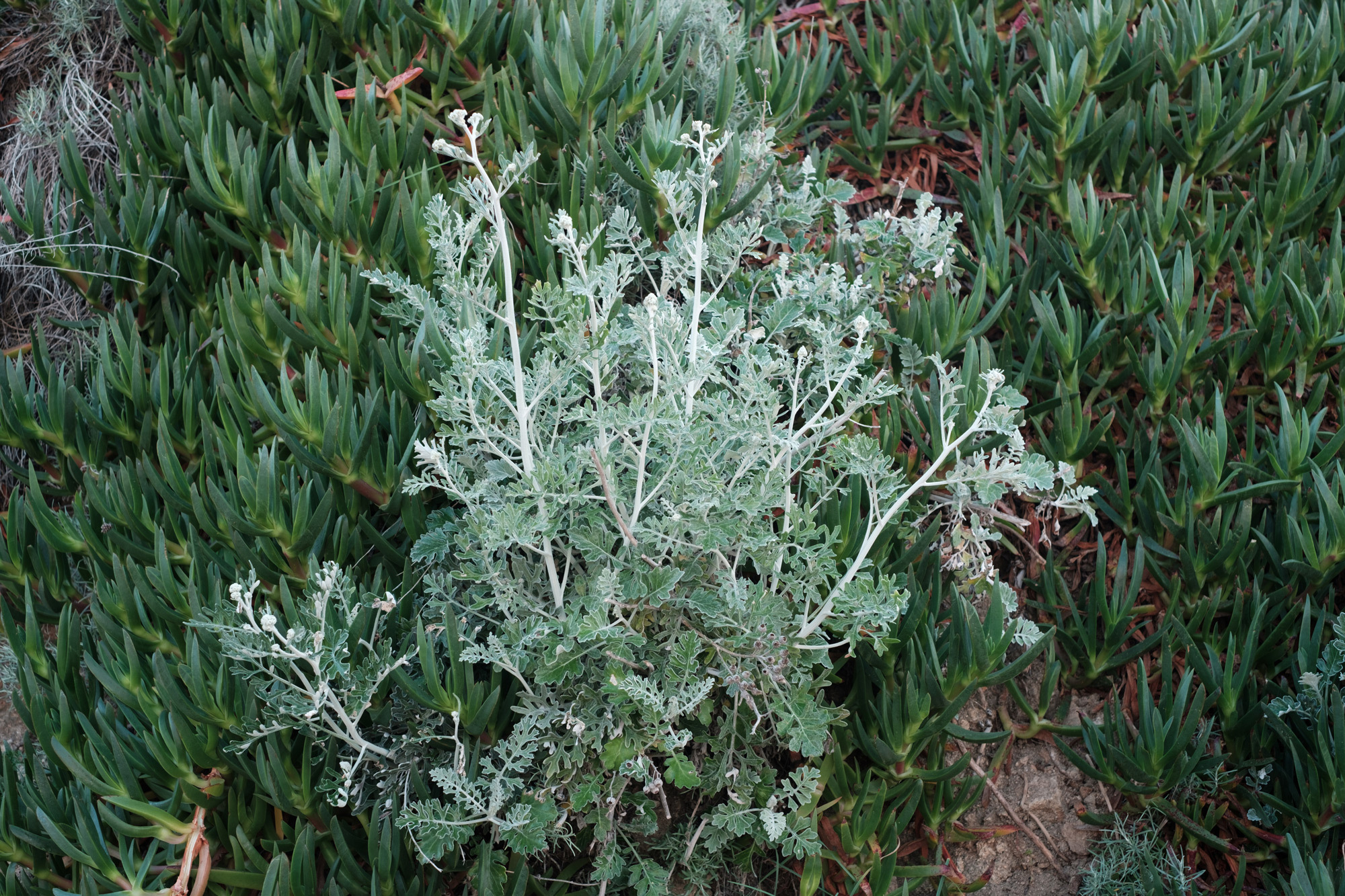Wormwood
Artemisia absinthium, or wormwood, is a silvery-green perennial plant with a long history of medicinal and culinary applications. Best known as the key ingredient in absinthe, wormwood is also recognized for its bitter properties and potential therapeutic uses. In Alberta, while it has found various applications, wormwood has also gained notoriety as an invasive species.

More on Wormwood
About
Wormwood is a hardy plant, native to temperate regions of Europe, Asia, and North Africa. Its distinctive grey-green leaves and yellow flowers make it easily recognizable. The plant exudes a strong, aromatic scent, with the characteristic bitterness coming from compounds like thujone (this same compound is found in Cedar foliage). In Alberta, this adaptability, unfortunately, means it can thrive a little too well, outcompeting native species and becoming invasive in natural ecosystems.
History
Historically, wormwood has been employed for a multitude of purposes. Its name, "wormwood", hints at one of its traditional medicinal uses: a vermifuge to expel intestinal worms. It's perhaps most infamously known for its role in absinthe, a high-proof spirit that gained popularity in Europe in the 19th and early 20th centuries and was later banned in many countries due to health concerns related to thujone content. Wormwood's presence in Alberta is a testament to the region's dynamic ecological history. Introduced for its potential uses, it has since spread in wild areas, leading to its classification as an invasive species in the province.
Ways To Cook
Despite its invasive status in Alberta, wormwood has culinary and medicinal applications. In the realm of beverages, beyond absinthe, it's used as a bittering agent in some vermouths and other spirits. Its potent bitter quality can be employed in small amounts to stimulate digestion or as an ingredient in homemade bitters for cocktails. Medically, wormwood has been used in traditional remedies for various ailments, from digestive issues to infections. However, due to the presence of thujone, which can be toxic in large amounts, internal consumption should be approached with caution and ideally under expert guidance. In Alberta, while some might appreciate its uses, efforts are also focused on controlling its spread to protect native ecosystems.
